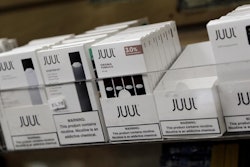
[Editor's Note: This story was written live from the 2019 AHRMM Conference & Exhibition in San Diego, CA.]
Supply space feeling the squeeze
As hospital operations grow and storage shrinks, hospitals are looking at moving to off-site distribution centers. Of course, this isn’t a decision to take lightly… it’s a huge undertaking and requires intense planning for moving goods to the clinical sites and the DC may need state-specific licensing if any of the products are considered pharmaceuticals. Some attendees noted that for certain products, some are found in one inventory for LUM (low unit of measure) while others are located in bulk and that it may make sense to integrate the two so the products are in one place.
Tracking inventory
Whether through unique device identifier (UDI) adoption, RFID tracking or other barcode scanning methods, those struggling with inventory management and having the right products ready at the right time are finding solace in traceability systems. RFID tracking offers promise in tracing specific items through the facility down to the room, preventing expired products from being used on patients and in locating recalled products quickly. Hospitals still find challenges with multiple barcode formats on packaging and IT systems that lack accurate device data.
Establish appropriate KPIs. Lana Makhanik, COO and Co-Founder of healthcare IT company VUEMED, noted, “It’s not good enough to collect transactions. You have to act on the data. You have to have the framework to act on it.” This may look different from organization to organization, but dashboards or reporting should be in place so that decisions can be made daily, weekly or monthly. Who should be notified? This is the chance for a hospital to set up a connection between typically siloed areas: clinical areas, supply chain and finance.
UDI adoption
Speaking of UDI adoption, Jean Sargent, Principal, Sargent Healthcare Strategies, reported on some stats found by a report from the Bar Code at the Point of Care workgroup:
-
52% of providers are not scanning the manufacturers’ UDIs at the point of care.
-
86% say a UDI icon or the word “UDI” next to the barcode would make it easier to identify at the point of care.
-
52% cited multiple barcodes on product packaging as a barrier to UDI scanning.
-
64% of providers don’t know how to contact manufacturers with barcode or data issues.
The AHRMM Learning UDI Community (LUC), a coalition of health care leaders across sectors,is hard work developing a common understanding and approach to UDI adoption within the health care setting. The LUC has over 560 participants and 11 workgroups delivering reports, presentations, case studies and webinars. For more information, check out the AHRMM LUCpage.
Keeping the people in mind
When resources are stretched thin and a project gets underway, you can’t ignore the human factor in supply chain operations. Shelly Stephens Dijkman, Senior Director, Supply Chain Central Distribution and Logistical Operations at Children’s Health System of Texas, said that it’s key to overcommunicate major changes to staff. Even with advanced notice, they still may feel blindsided by large changes, such as the move to an off-site distribution center or new RFID tracking system. Establish clear roles and responsibilities… if you don’t, people will invent their own ways of doing things. Nurses and techs may push back on scanning products for new traceability systems—they’re already extremely busy with patients. One hospital found success by setting a limit, only requiring scanning of products over $50 to allow nurses to maintain efficiency.





















